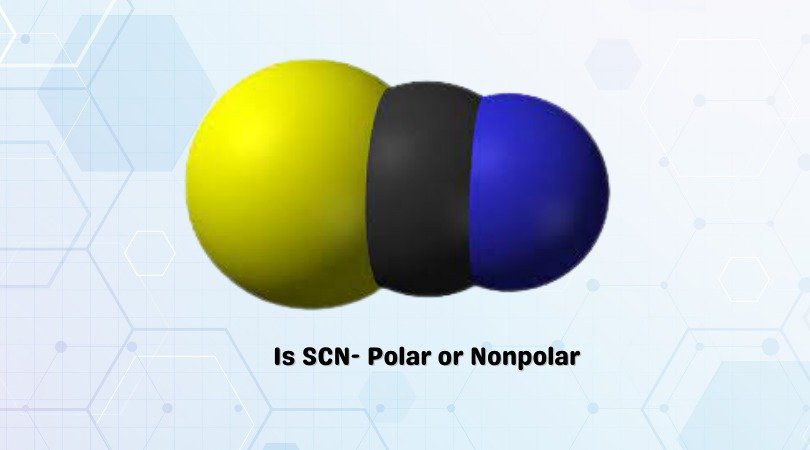A trihalide of Boron, BCl3 consists of a single boron atom and three atoms of Chlorine. It is a colorless inorganic compound that has a pungent odor and appears as fumes in air. It finds use in various applications, including the production of elemental Boron.
BCl3 is an aggressive reagent and reacts readily with moisture to give Hydrochloric Acid or HCl. Boron Trichloride is produced through industrial means by direct chlorination of Boron Oxide and Carbon at high temperatures. The compound has the following properties:
| Name of the molecule | Boron Trichloride (BCl3) |
| No. of valence electrons | 3+ (7×3) = 24 valence electrons |
| Hybridization | sp2 |
| Bond Angles | 120° |
| Molecular Geometry of BCl3 | Trigonal Planar |
This article will include other properties of BCl3 such as its Lewis Structure, molecular geometry, bond angles and its shape.
Contents
BCl3 Valence Electrons
The calculation of valence electrons of BCl3 is an important step before we get to its Lewis structure. The total number of valence electrons in BCl3 is calculated as follows:
- Total number of valence electrons in BCl3 = Valence Electrons in Boron [B] + Valence Electrons in Chlorine [Cl] – 1
Boron has an atomic number of 5, thus having three valence electrons. As we know already, Chlorine has seven valence electrons. Since there are three atoms of Chlorine, we multiply the number of valence electrons present by 3. This gives us 21 valence electrons for 3 Chlorine atoms. Therefore, from the above relation 1, the total number of valence electrons in BCl3 is given by
- Total Valence Electrons in BCl3 = 3 (from Boron) + 7 x 3 (from Chlorine)
= 24 Valence Electrons Thus BCl3 has 24 total valence electrons.
BCl3 Lewis Structure
The Lewis dot structures of a compound represent a schematic arrangement of its constituent molecules, atoms, and electron bonds.
Lewis structures are drawn in accordance with the octet rule, where each atom in the molecule tries to obtain 8 electrons in its outermost shell. There are a few exceptions to this rule, with Boron being one of them.
Here for BCl3, the Boron atom is placed at the centre of the molecule as it is the least electronegative. It then facilitates the bonding of pairs between itself and the surrounding Chlorine atoms.
The 24 valence electrons are placed accordingly, and bonds are formed. The lone pairs are placed starting from the outer end, going inwards.
Boron forms covalent bonds with the surrounding Chlorine atoms by sharing its three valence electrons. This satisfies the octet rule of Chlorine but Boron is left with only 6 electrons in its outermost shell. Boron doesn’t necessarily need to fulfil the octet rule and is an exception to it.
However, we can form a double bond between one of the Chlorine atoms and Boron to satisfy the octet rule fully. Hence, there are now two different Lewis structures for BCl3. 

Using the concept of formal charges, we can determine which Lewis is the most stable state for the molecule. The structure with the most formal charges close to zero is considered to be the most stable.
FC = Valence Electrons – Non-bonding electrons – (Bonding electrons ÷ 2) Formal charges for structure 1 are given by:
-
Element V N B/2 FC Cl 7 6 2/2 0 B 3 0 3/2 0
Formal charges for structure 2 with the double bond in place is given by:
-
Element V N B/2 FC Cl –double bonding 7 4 4/2 +1 Cl- single bond 7 6 2/2 0 B 3 0 8/2 -1
As you can see from the above tables, Boron’s Lewis structure doesn’t require it to satisfy the octet rule in its most stable form.
BCl3 Hybridization
Boron’s electronic configuration is given by 1s2 2s2 2p1. Boron forms three covalent bonds with Chlorine. In its excited state, one of the electrons moves up from the 2s orbital to the 2p orbital. Hybridization now occurs, and one 2s and two 2p orbitals of Boron form bonds with the 3p orbital of Chlorine, thus forming three sp-p bonds.
Therefore, the hybridization of BCl3 is sp2. 
BCl3 Bond Angles
The molecular structure of BCl3 features Boron as the central atom and three Chlorine atoms surrounding it. Due to the presence of lone pairs, the Chlorine atoms repel each other forming bond angles of 120°.
BCl3 Molecular Geometry and Shape
 Boron forms the central atom in the molecule, with the Chlorine atoms pushing as far away from each other as possible. We have the three Chlorine atoms arranged in an equidistant manner around the Boron atom.
Boron forms the central atom in the molecule, with the Chlorine atoms pushing as far away from each other as possible. We have the three Chlorine atoms arranged in an equidistant manner around the Boron atom.
Since the steric number of this molecule is 3, it forms a Trigonal Planar structure with bond angles of approximately 120°. This also occurs because Boron is an exception to the octet rule.
CONCLUDING REMARKS
Let’s quickly summarize the salient features of BCl3.
- BCl3 consists of one Boron atom and three Chlorine atoms
- In its most stable state, Boron forms three covalent bonds with the surrounding Chlorine atoms making for three bonded pairs in the centre.
- BCl3 has an sp2 hybridization state.
- BCl3 has a trigonal planar structure with bond angles of 120°.




